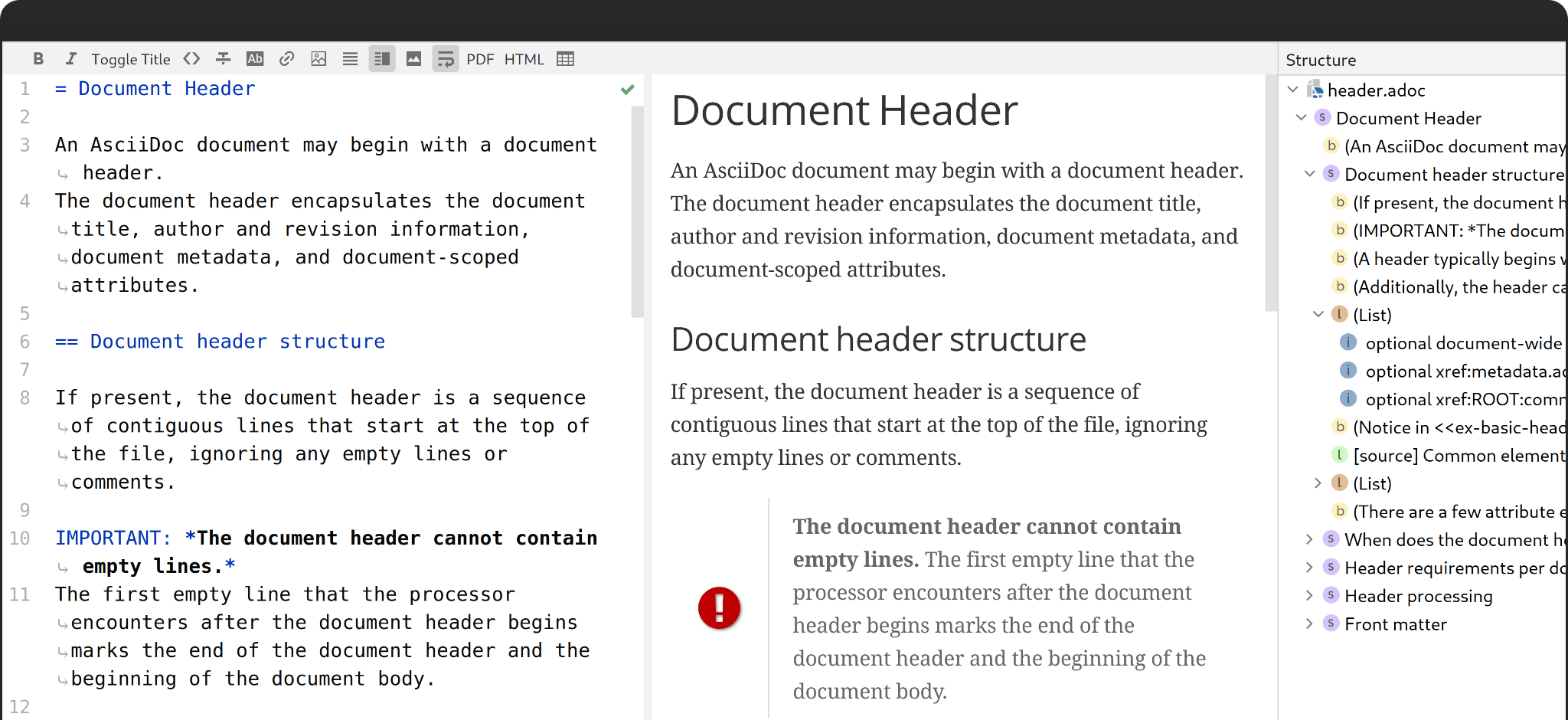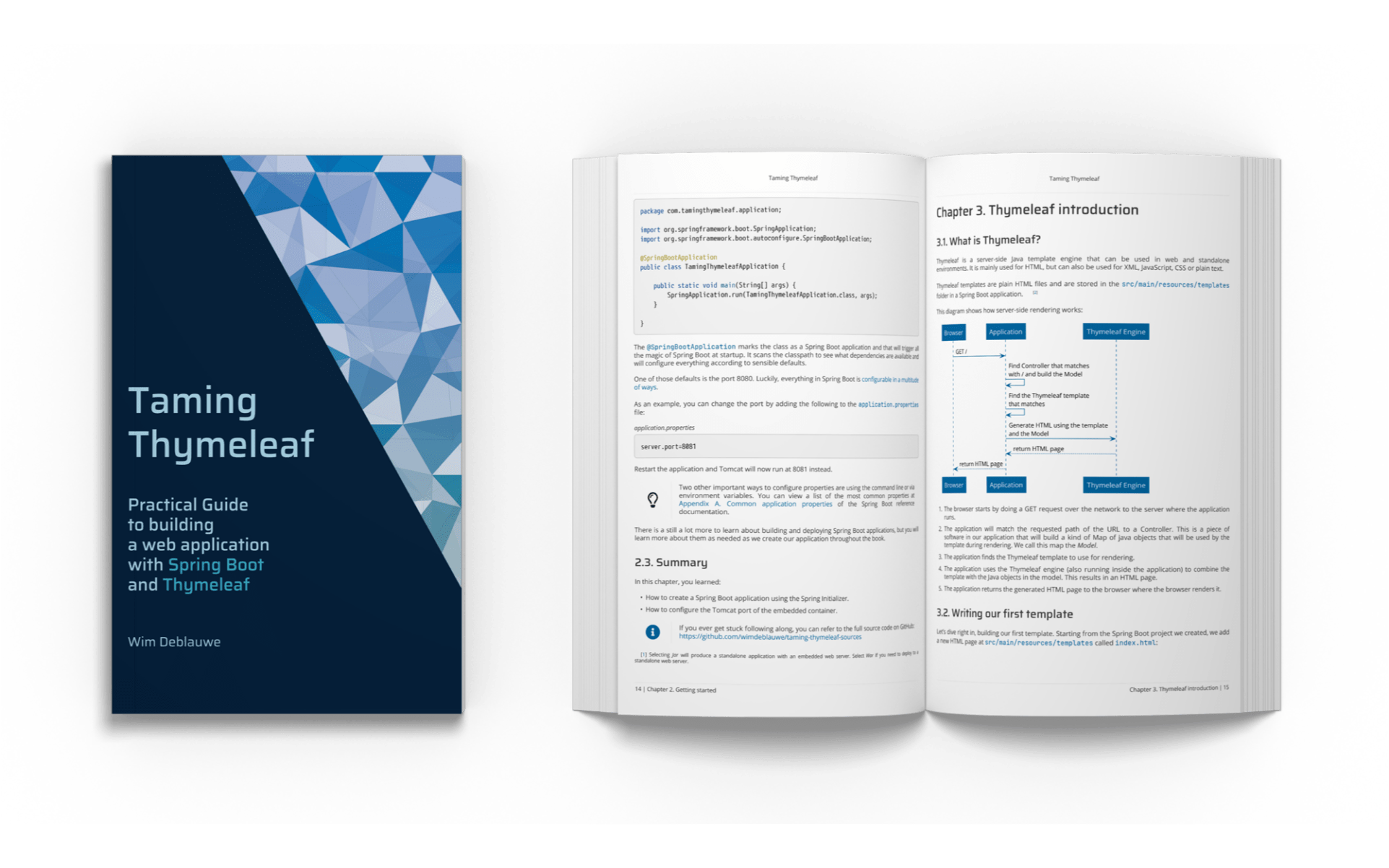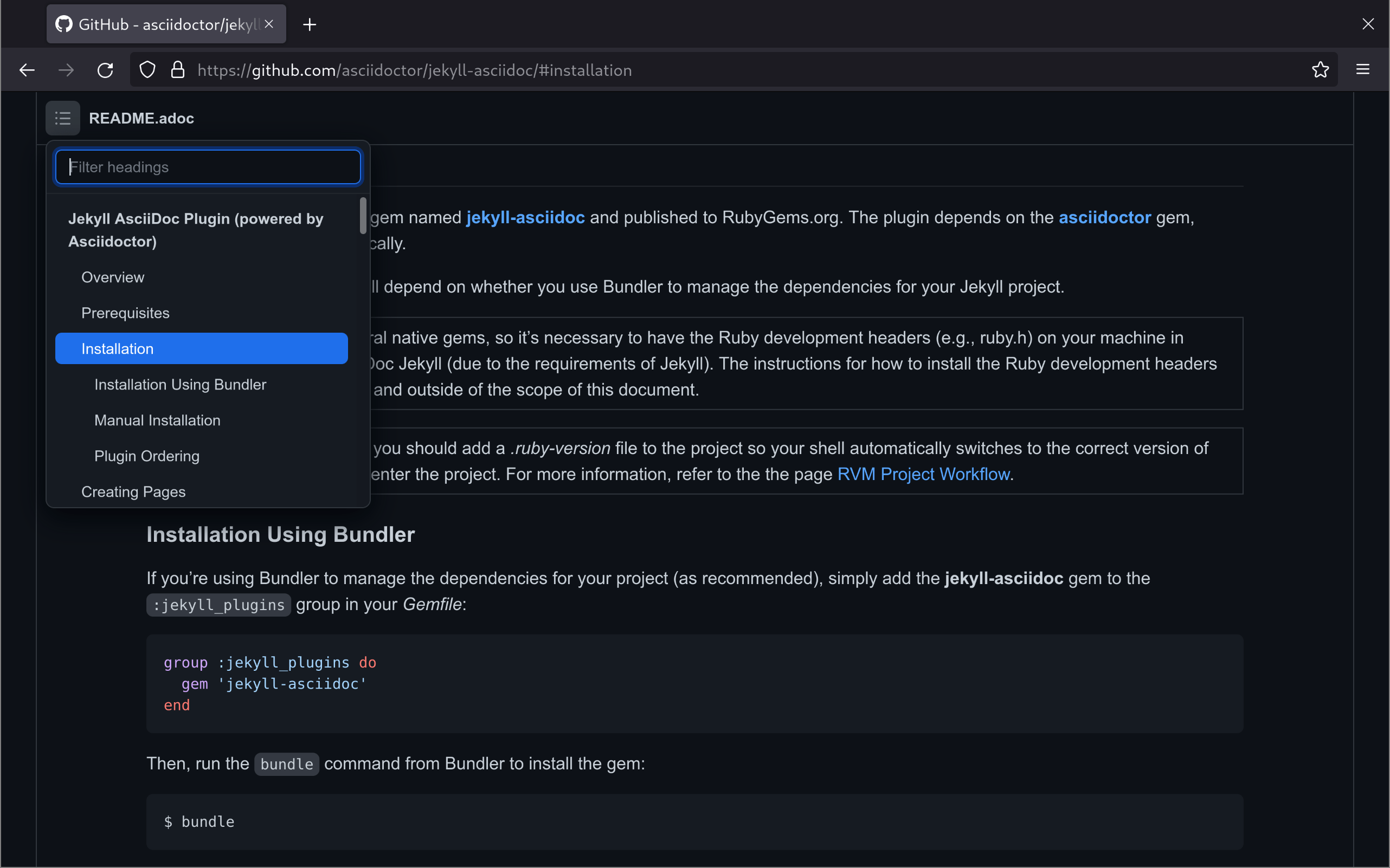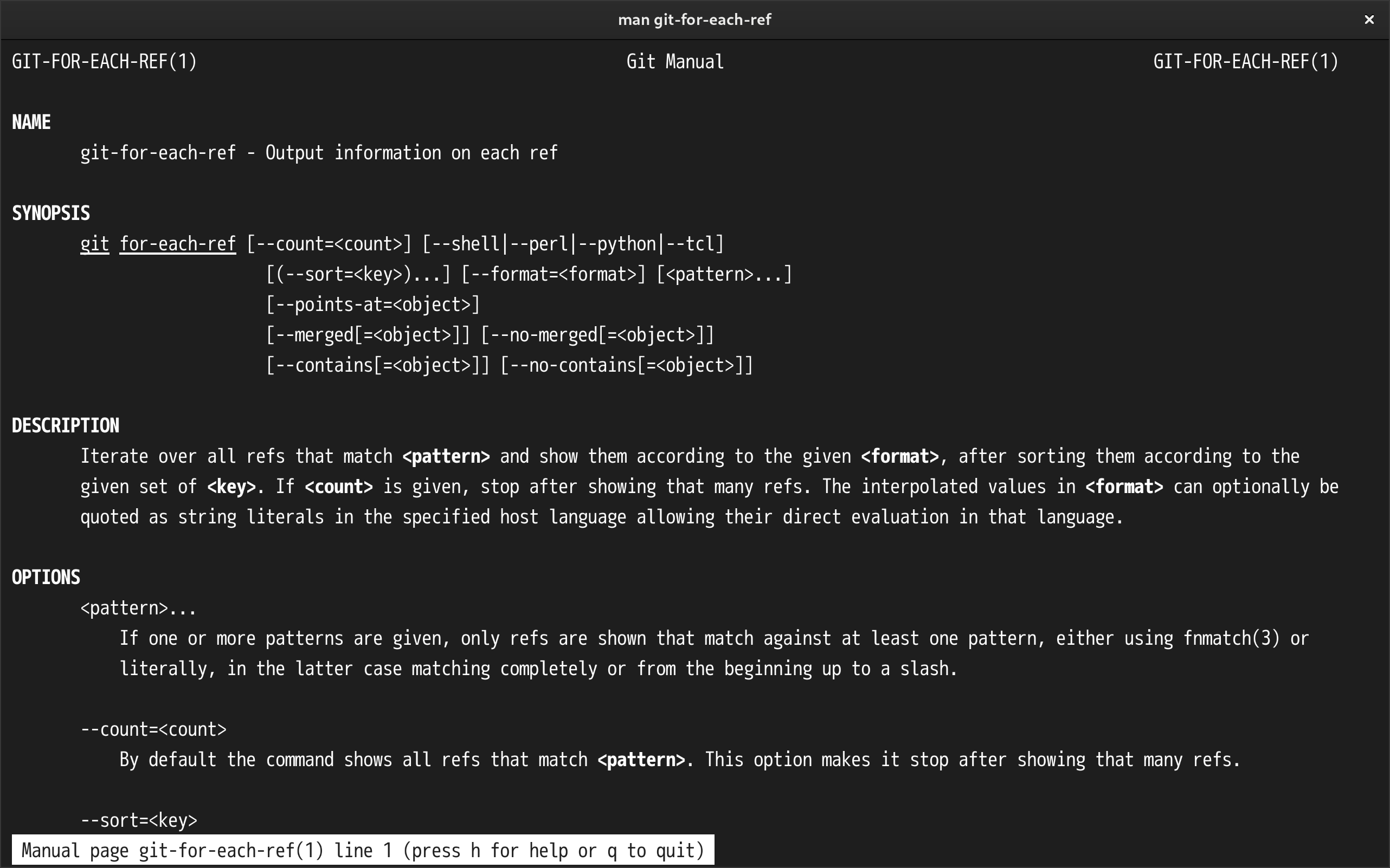<?xml version="1.0" encoding="UTF-8"?>
<!DOCTYPE topic PUBLIC "-//OASIS//DTD DITA Topic//EN" "topic.dtd">
<topic id="required_id">
<title>Topic Title</title>
<shortdesc>A brief description of topic.</shortdesc>
<body>
<section id="section_title">
<title>Section title</title>
<p>A paragraph with <b>bold</b> and <i>italic</i> text.</p>
<fig>
<title>Image title</title>
<image href="an-image.jpg" align="center" alt="An image"/>
</fig>
<p>The <codeph><xref></codeph> tag is used for source-to-source links, like <xref href="a-topic.dita"/>, and external links.
An external link, <xref href="https://eclipse.org" format="html" scope="external">Eclipse</xref>, has to specify the format and scope.</p>
<pre frame="all">A preformatted paragraph is represented by the <pre> tag.</pre>
<p>The following source code block contains a Ruby function named <codeph>hello</codeph> that prints <q>Hello, World!</q>.</p>
<codeblock outputclass="language-ruby">def hello name = 'World'
puts "Hello, #{name}!"
end</codeblock>
</section>
<section id="sibling_section_title">
<title>Sibling section title</title>
<p>DITA doesn't have nested sections.</p>
</section>
</body>
</topic>












